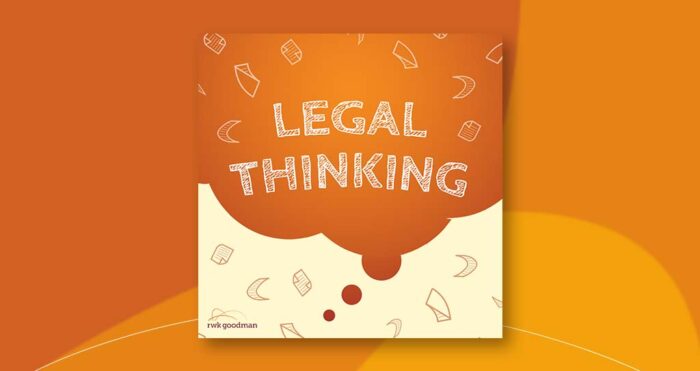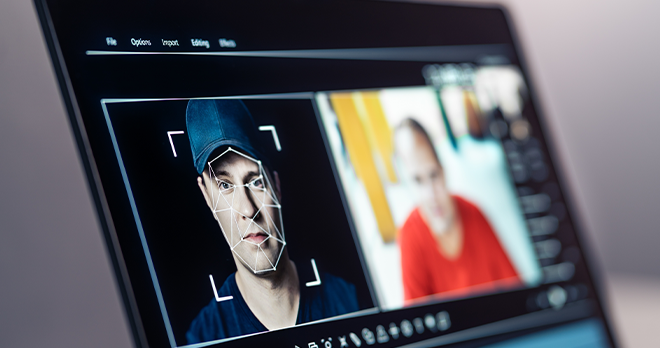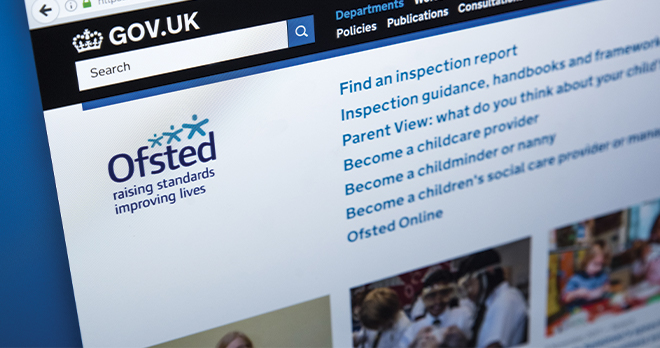Intellectual Property: The Basics | Legal Thinking Podcast
This week Liam goes solo to interview Charlotte Ebbutt and Stephen Welfare, RWK Goodman's own Intellectual Property experts, to talk about trademarks, patents and all things IP!
Find out more about how we can help with Intellectual Property rights here >
Earlier this year Charley Ebbutt and Stephen Welfare attended the National Association of Jewellers Awards and presented the prestigious Designer of the Year Award, which RWK Goodman was a proud sponsor of. This award was a perfect fit for RWK Goodman, because they operate the COPYWATCH Scheme, with the NAJ, and have done so for over twenty-five years. So, Stephen, can you explain a little bit about what the COPYWATCH scheme is?
Stephen Welfare: COPYWATCH - It’s a bespoke intelligent property advice and protection service, which is offered by the NAJ, and I should add there are also other member organisations within the Allied Trades Federation, which is a combination of trade bodies, to its members, to their various members, entitling them to intellectual property advice, which they receive from both ourselves, and also from trademark attorneys.
And for complete clarity, what is meant when you talk about intellectual property?
Stephen Welfare: Yeah, it’s got - I should add nothing to do with clever real estate! Intellectual property here is the collection of intangible property rights wherein various rights such as copyright and trademark are exercised by those owners. So, there can be various associated rights such as passing off, confidential information, trade secrets. All of these things are part of that collection of intellectual property rights.
And under the COPYWATCH scheme, lawyers, including yourself, Stephen and Charlotte, attend major trade shows at the Birmingham NEC and in London, to offer on the spot advice to NIJ members, who are exhibiting or visiting. Apparently this can lead to some interesting or on occasions some bizarre queries?
Charlotte Ebbutt: So it’s not uncommon when you’re walking around at these tradeshows to see suspiciously similar products on different stands, and I’m sure Stephen can attest to this over his years of attending. I think the most bizarre or sort of oddest product that I was ever asked to give some advice on, on the spot was a range of knuckle dusters that had been created by one of the exhibitors there and they were asking whether it would be possible to protect them as registered designs. But yeah, not the most usual product, but certainly an interesting one to look at.
And Stephen…
Stephen Welfare: Oh - so many more than we’ve got time to list - I dare say. But, following on from Charley’s reference to a knuckle-dusters, probably the most infamous occasion at a tradeshow, was where a client of ours alleged that somebody else had a knockoff of one of his products on his stand and wanted immediate action. But before my colleague and I were able to intervene, he took the law into his own hands, stormed on to the other chap’s stand, confronted him, and it kicked off with punches being thrown, resulting in my colleague and I having to separate the combatants and I had to then keep my client literally with his head down, to avoid the security services and the police - so when they turned up, everything was calm and serene. So - it sounds like it’s a very violent place with knuckle dusters and fist fights, but it isn’t usually! But they were exceptional cases, yeah.
So it sounds like you’re really going the extra mile there for your client as well Stephen, by protecting them from physical altercations!
Stephen Welfare: Yeah… Should have charged danger money - but no… not normally… normally it’s much more simple and boring - but there we are!
Got it. So, down to business, Stephen, what are intellectual property rights?
Stephen Welfare: Yeah, so the main intellectual property rights/register rights are patents, registered design and trademarks. The unregistered rights are copyright and unregistered design rights. The associated rights, as I mentioned earlier are things like passing off and confidential information, trade secrets and so forth.
And Charley, can you talk a little bit more about trademarks?
Charlotte Ebbutt: Yes of course. Well trademarks are a huge topic in their own right, and I could probably do an entire Podcast just on trademarks! But I will try and keep this relatively brief. So, a trademark in its simplest form, is a sign which is used by a trader to differentiate its goods from those of other traders. And if you think about a brand - in olden times, this was developed out of - you know, farmers and herders literally branding their animals, with a mark, to show that the animals belonged to them. And whilst it’s become rather more sophisticated since then, essentially a trademark is used to communicate where a product or a service has come from.
And a trademark can take many forms. It can be - you know, words - so a brand name. It can be a slogan, a design or a logo, domain names, shape of goods and packaging can be a trademark, as can more unusual things, such as smells, sounds, colours, and even some moving digital images. These can all function as a trademark. And, as Stephen said earlier, trademarks can be registered. They can also be unregistered.
But the benefit of having a registered trademark, is that it gives the owner the right to exclusive use of that mark, in connection with the goods and services, for which it’s registered. And that means that you have the right to sue anyone who uses an identical, or similar trademark, in connection with similar or identical goods and services, as you. And in the UK, a registered trademark can last indefinitely, provided that it’s renewed every ten years. And trademarks can be really valuable assets, and we saw in 2021 - that ASOS paid I think it was £265 million for the Topshop, Topman and Miss Selfridge brands. And also trademarks are really interesting, because they’re around us all the time.
There are trademark disputes going on all the time. So, at the moment, and this is relevant to the cost-of-living crisis, you might have seen recently in the news about the dispute between Lidl and Tesco, whereby Lidl have alleged that Tescos use of its Clubcard logo - so the blue square with the yellow circle, infringes various Lidl trademarks - and that’s - you know, going to be - go to trial next year. So - and we have seen, you know, over the years, all sorts of different famous trademark cases, from Christian Louboutin’s red soled shoes to Colin The Caterpillar - all sorts of cases in the news and that are really interesting. So yeah - trademarks are great!
You mentioned there that trademarks can be a registered right. What’s the other types of registered rights?
Charlotte Ebbutt: Yep, so I’ve - as Stephen said, IP rights fall into two general categories. You’ve got registered rights and unregistered rights. Registered rights are granted, basically once you’ve applied to an official body, and in the UK that’s the UK Intellectual Property Office - and aside from trademarks, the other registered rights are patents and registered designs.
Ah ha! Patents - so on patents, what is a patent? And is it patent or is ‘pay-tent’? And if you want to explain a little bit about the novelty as well.
Stephen Welfare: Well I’ll probably answer that one as patent is the most ancient of the rights and obviously therefore I’m instantly more qualified to talk about that than Charlotte, as I am the more ancient of us two!
So it dates right back to the Royal prerogative, and rights were granted - monopoly rights to inventions by the use of the Royal prerogative through what was called letters patents. So it doesn’t matter whether you refer to the right as a patent or a ‘pay-tent’. Lawyers and attorneys refer to the grant of a patent, but as I say it comes initially from the grant of letters – ‘pay-tents’, so it’s not incorrect to refer to it as a ‘pay-tent’.
A patent is a registered right and once registered it grants to the owner a monopoly of twenty years, during which that owner can exploit it. It’s there to protect industrial inventions. To qualify for a grant of patent the invention must be novel, which we understand to be new. It must involve an inventive step and thirdly it must be capable of industrial application, which to put another way, means ideas, notions and even discoveries themselves, are not patentable, unless and until, they are embodied in an article, or a progress that is capable of business exploitation. A novelty means that it must be new.
So when filing the Grant of Patent the invention must be new. Well what does that mean? Well it means that it must not already be known to the public. That’s what we called being part of the prior art. If any details of the invention can be found in the prior art, then the application will fail. The public here is the world at large, not just the UK, so it’s imperative that the details of the invention are kept secret until after the application has been filed. Some examples of the sort of things that are capable of a grant of patent are all sorts of mechanical devices. And that could be something as simple as a mousetrap. It covers methods for doing things - such as the methods for dyeing or bleaching of fabrics. It can cover chemical compounds - for example a new drug and this is perhaps the most used area for patents these days, and certainly can lead to a lot of litigation. And also it includes mixtures of compounds. For example - hand creams.
What unusual products or inventions have been granted a patent?
Stephen Welfare: I can’t say whether all of these weird and wacky applications ended up being granted, but you can access applications themselves in the IPO website, and they are indeed quite weird and wacky. And some - I’ll give you three examples - one was for an adult advent calendar - sounds innocent enough by itself. But it consisted of twenty-five windows, like your ordinary chocolate calendar, but it [laughter] - but in this case, behind each window, were different condoms, with a sexual position that you could presumably try out. As I say, no idea how far that got…
Ha-ha! Merry Christmas [laughter]
Stephen Welfare: Merry Christmas indeed! Another one - another application - this is almost unbelievable, was for a spider ladder - yes literally a little latex ladder, which you could put into your bath, to help the spider climb out of the sink!
And oh - perhaps one more… is a portable seat. This is - well it would have been, if it had gone into production, a padded seat, which you strap around your waist. So when you get the need to sit down, you can sit down anywhere and you’ve immediately got attached to yourself, a nice cushioned seat, which is actually pivotable [laughter].
It sounds very convenient, if not may be not very fashionable, to be honest with you!
Stephen Welfare: [Laughter]. Convenient seat indeed. Yes.
So, Charley - can you explain a little bit more about registered designs. What are they and how are they obtained and what is the period of protection?
Charlotte Ebbutt: So, a registered design is also a monopoly right, which gives the owner the exclusive right to make articles that incorporate that design. So registered designs can protect the appearance of three dimensional and some two-dimensional products, or parts of products and designs. It’s quite interesting to note that there is no requirement for the design to have any artistic merit. However, it must meet certain criteria to qualify for protection.
So the design must be new and similarly to a patent, it means that an identical design must not have been made available to the public, anywhere in the world, before the application is made. However, the designer does get a grace period of twelve months, after the first disclosure of the design in which to file the application. So, all is not lost if you have disclosed it, but you need to get the application in within twelve months.
The design must also have what’s called individual character. And this means that it must give a different overall impression from any other previous designs that are already out there. And thirdly, it mustn’t fall into one of the specific exclusions, which are set out in the legislation. And these include things like computer programmes, designs for products which are dictated solely by their technical function. Things like royal arms and coats of arms, and other specifically controlled symbols. Such as Olympic rings and things like that. And a registered design lasts for a total of twenty-five years. But you need to ensure that it’s renewed every five years, in order to keep it in force.
Charley and Stephen, thank you very much for your time.

Subscribe to Legal Thinking
Want to hear more from our podcast?
Find out where you can subscribe and check our our back catalogue right here on our website.







